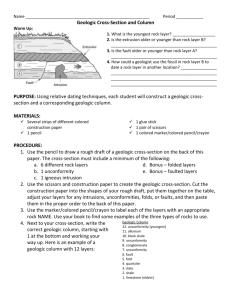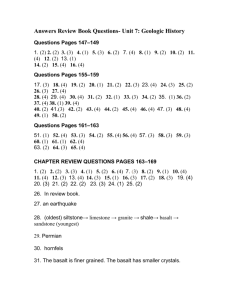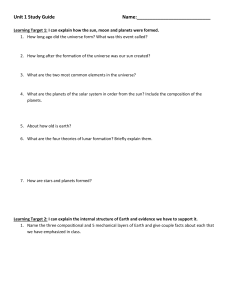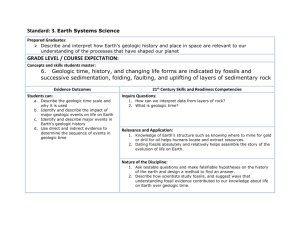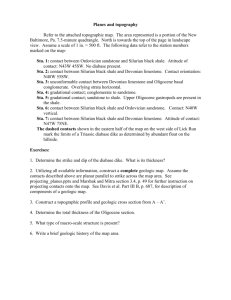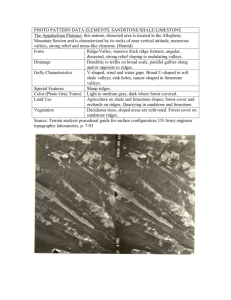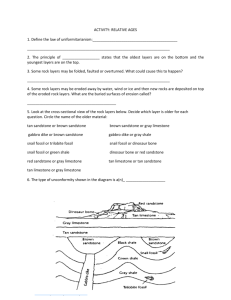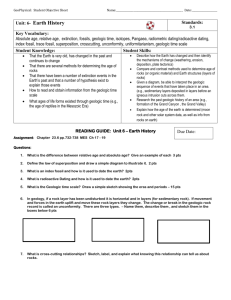Geologic Cross
advertisement
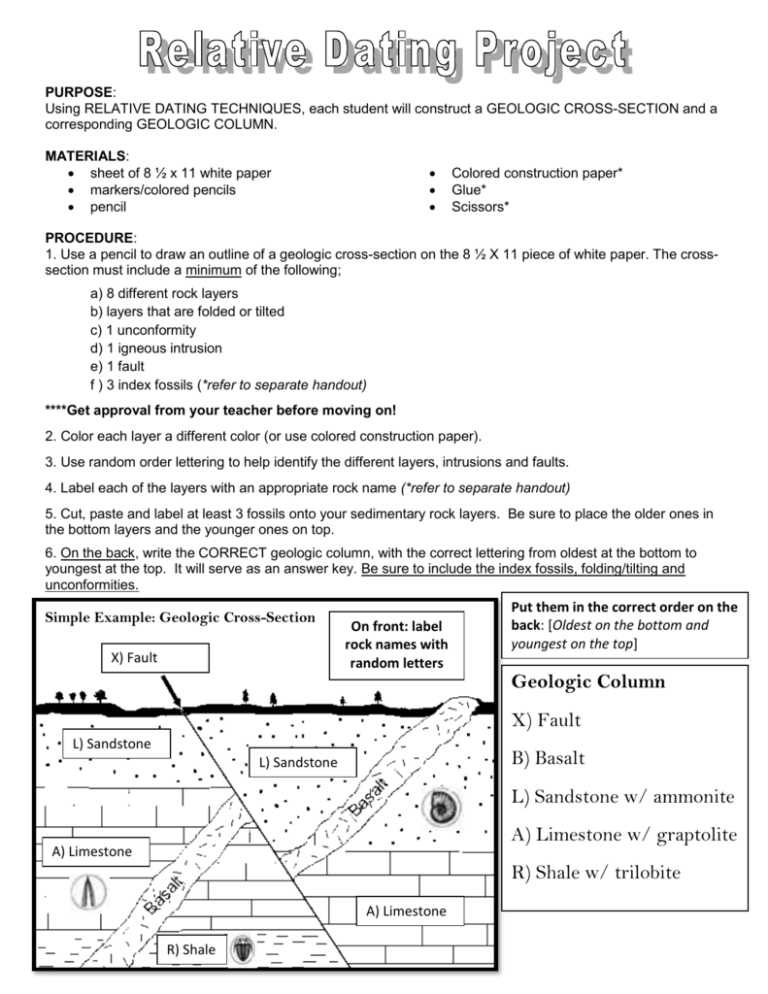
PURPOSE: Using RELATIVE DATING TECHNIQUES, each student will construct a GEOLOGIC CROSS-SECTION and a corresponding GEOLOGIC COLUMN. MATERIALS: sheet of 8 ½ x 11 white paper markers/colored pencils pencil Colored construction paper* Glue* Scissors* PROCEDURE: 1. Use a pencil to draw an outline of a geologic cross-section on the 8 ½ X 11 piece of white paper. The crosssection must include a minimum of the following; a) 8 different rock layers b) layers that are folded or tilted c) 1 unconformity d) 1 igneous intrusion e) 1 fault f ) 3 index fossils (*refer to separate handout) ****Get approval from your teacher before moving on! 2. Color each layer a different color (or use colored construction paper). 3. Use random order lettering to help identify the different layers, intrusions and faults. 4. Label each of the layers with an appropriate rock name (*refer to separate handout) 5. Cut, paste and label at least 3 fossils onto your sedimentary rock layers. Be sure to place the older ones in the bottom layers and the younger ones on top. 6. On the back, write the CORRECT geologic column, with the correct lettering from oldest at the bottom to youngest at the top. It will serve as an answer key. Be sure to include the index fossils, folding/tilting and unconformities. Simple Example: Geologic Cross-Section X) Fault On front: label rock names with random letters Put them in the correct order on the back: [Oldest on the bottom and youngest on the top] Geologic Column X) Fault L) Sandstone B) Basalt L) Sandstone L) Sandstone w/ ammonite A) Limestone w/ graptolite A) Limestone R) Shale w/ trilobite A) Limestone R) Shale Sandsto Another Example: Geologic Cross-Section On front: Random lettering & Label Rock Names I) Basalt U) Conglomerate Y) Limestone T) Coal E) Mudstone R) Siltstone Q) Sandstone W) Shale On the back: Geologic Column I. Basalt U. Conglomerate w/ ammonite Y. Limestone T. Coal **Erosion/Unconformity **Folding R. Siltstone E. Mudstone w/ graptolite W. Shale Oldest Q. Sandstone w/ trilobite

